#Famous Places in Egypt
Text
— ✿ TAG DUMP. › LENNY GRAYSON.
These are going to be under a read more, because this got very long.
— ✿ i stumbled over all my words i made it weird i made it worse. › lenny's default yugioh verse.
— ✿ no time to lose we’ve got to move steady your hand. › lenny's default naruto verse.
— ✿ you’re a virgin who can’t drive. › lenny's high school verse.
— ✿ you’re like a sunshine only giving good vibes anytime that you roll in. › lenny's yugioh gx verse.
— ✿ from underneath the trees we watch the sky confusing stars for satellites. › lenny's yugioh 5ds verse.
— ✿ kiss kiss fall in love. › lenny's ohshc verse.
— ✿ is this what it feels like to really cry. › lenny's noragami verse.
— ✿ you wouldn’t find a riceball in a fruits basket. › lenny's fruits basket verse.
— ✿ everybody’s trying to be famous and i’m just trying to find a place to hide. › lenny's swac verse.
— ✿ i’ll choose you over and over again. › lenny's pokemon verse.
— ✿ put down the weapons you fight with and kill em with kindness. › lenny's kingdom hearts verse.
— ✿ darling don’t you ever grow up just stay this little. › lenny's single mom verse.
— ✿ in ancient egypt when the pyramids were still young. › lenny's ancient egypt verse.
— ✿ let me be the one to light a fire inside those eyes. › lenny's headcanons.
— ✿ she wears flower crowns and knitted sweaters. › lenny's appearance.
— ✿ the more boys i meet the more i love my cat. › lenny's aesthetic.
— ✿ but i know this crush ain’t going away. › ryou and lenny. › diverse-hearts.
— ✿ let me love you until you learn to love yourself. › saeran and lenny. › diverse-hearts.
— ✿ i could be your sunshine girl or the company for your misery. › lenny's supernatural verse.
#— ✿ no time to lose we’ve got to move steady your hand. › lenny's default naruto verse.#— ✿ you’re a virgin who can’t drive. › lenny's high school verse.#— ✿ you’re like a sunshine only giving good vibes anytime that you roll in. › lenny's yugioh gx verse.#— ✿ from underneath the trees we watch the sky confusing stars for satellites. › lenny's yugioh 5ds verse.#— ✿ kiss kiss fall in love. › lenny's ohshc verse.#— ✿ is this what it feels like to really cry. › lenny's noragami verse.#— ✿ you wouldn’t find a riceball in a fruits basket. › lenny's fruits basket verse.#— ✿ everybody’s trying to be famous and i’m just trying to find a place to hide. › lenny's swac verse.#— ✿ i’ll choose you over and over again. › lenny's pokemon verse.#— ✿ put down the weapons you fight with and kill em with kindness. › lenny's kingdom hearts verse.#— ✿ darling don’t you ever grow up just stay this little. › lenny's single mom verse.#— ✿ in ancient egypt when the pyramids were still young. › lenny's ancient egypt verse.#— ✿ let me be the one to light a fire inside those eyes. › lenny's headcanons.#— ✿ she wears flower crowns and knitted sweaters. › lenny's appearance.#— ✿ the more boys i meet the more i love my cat. › lenny's aesthetic.#— ✿ but i know this crush ain’t going away. › ryou and lenny. › diverse-hearts.#— ✿ let me love you until you learn to love yourself. › saeran and lenny. › diverse-hearts.#— ✿ i could be your sunshine girl or the company for your misery. › lenny's supernatural verse.#— ✿ tag dump.#— ✿ i stumbled over all my words i made it weird i made it worse. › lenny's default yugioh verse.
0 notes
Text

— ✿ tag dump. › LENNY GRAYSON.
These are going to be under a read more, because this got very long.
— ✿ i stumbled over all my words i made it weird i made it worse. › default yugioh verse.
— ✿ no time to lose we've got to move steady your hand. › default naruto verse.
— ✿ you're a virgin who can't drive. › high school verse.
— ✿ you’re like a sunshine only giving good vibes anytime that you roll in. › yugioh gx verse.
— ✿ from underneath the trees we watch the sky confusing stars for satellites. › yugioh 5ds verse.
— ✿ kiss kiss fall in love. › ohshc verse.
— ✿ is this what it feels like to really cry. › noragami verse.
— ✿ you wouldn't find a riceball in a fruits basket. › fruits basket verse.
— ✿ everybody's trying to be famous and i'm just trying to find a place to hide. › swac verse.
— ✿ i'll choose you over and over again. › pokemon verse.
— ✿ put down the weapons you fight with and kill em with kindness. › kingdom hearts verse.
— ✿ darling don’t you ever grow up just stay this little. › single mom verse.
— ✿ in ancient egypt when the pyramids were still young. › ancient egypt verse.
— ✿ let me be the one to light a fire inside those eyes. › headcanons.
— ✿ she wears flower crowns and knitted sweaters. › appearance.
— ✿ the more boys i meet the more i love my cat. › aesthetic.
— ✿ but i know this crush ain't going away. › ryou and lenny. › diverse-hearts.
— ✿ let me love you until you learn to love yourself. › saeran and lenny. › diverse-hearts.
#— ✿ i stumbled over all my words i made it weird i made it worse. › default yugioh verse.#— ✿ no time to lose we've got to move steady your hand. › default naruto verse.#— ✿ you're a virgin who can't drive. › high school verse.#— ✿ you’re like a sunshine only giving good vibes anytime that you roll in. › yugioh gx verse.#— ✿ from underneath the trees we watch the sky confusing stars for satellites. › yugioh 5ds verse.#— ✿ kiss kiss fall in love. › ohshc verse.#— ✿ is this what it feels like to really cry. › noragami verse.#— ✿ you wouldn't find a riceball in a fruits basket. › fruits basket verse.#— ✿ everybody's trying to be famous and i'm just trying to find a place to hide. › swac verse.#— ✿ i'll choose you over and over again. › pokemon verse.#— ✿ put down the weapons you fight with and kill em with kindness. › kingdom hearts verse.#— ✿ darling don’t you ever grow up just stay this little. › single mom verse.#— ✿ in ancient egypt when the pyramids were still young. › ancient egypt verse.#— ✿ let me be the one to light a fire inside those eyes. › headcanons.#— ✿ she wears flower crowns and knitted sweaters. › appearance.#— ✿ the more boys i meet the more i love my cat. › aesthetic.#— ✿ but i know this crush ain't going away. › ryou and lenny. › diverse-hearts.#— ✿ let me love you until you learn to love yourself. › saeran and lenny. › diverse-hearts.
1 note
·
View note
Text
A Tag Dump // Verse Tags.
maybe we can find a place to feel good and we can treat people with kindness (main verse)
i'm standing here but you don't see me (high school verse)
you're like a sunshine only giving good vibes anytime that you roll in (yugioh gx verse)
from underneath the trees we watch the sky confusing stars for satellites (yugioh 5ds verse)
everybody’s trying to be famous and i’m just trying to find a place to hide (swac verse)
is this what it feels like to really cry (noragami verse)
kiss kiss fall in love (ohshc verse)
put down the weapons you fight with and kill em with kindness (kingdom hearts verse)
on this perfect day nothing’s standing in my way(pokemon verse)
they call me quiet girl but i’m a riot (glee verse)
in ancient egypt when the pyramids were still young (ancient egypt verse)
you wouldn’t find a riceball in a fruits basket (fruits basket verse)
#tag dump#maybe we can find a place to feel good and we can treat people with kindness (main verse)#i'm standing here but you don't see me (high school verse)#you're like a sunshine only giving good vibes anytime that you roll in (yugioh gx verse)#from underneath the trees we watch the sky confusing stars for satellites (yugioh 5ds verse)#everybody's trying to be famous and i'm just trying to find a place to hide (swac verse)#is this what it feels like to really cry (noragami verse)#kiss kiss fall in love (ohshc verse)#put down the weapons you fight with and kill em with kindness (kingdom hearts verse)#on this perfect day nothing's standing in my way (pokemon verse)#they call be quiet girl but i'm a riot (glee verse)#in ancient egypt when the pyramids were still young (ancient egypt verse)#you wouldn't find a riceball in a fruits basket (fruits basket verse)
0 notes
Text
I could fall in love with you

⋆.ೃ࿔*:・Synopsis: How I think the one piece men would realize they’ve got it bad for you!
⋆.ೃ࿔*:・Characters: Monsters trio x fem! Reader
⋆.ೃ࿔*:・cw: fluff fluff and more fluff! Sort of proofread
⋆.ೃ࿔*:・ song credit: I could fall in love by Selena

⋆.ೃ࿔*:・ LUFFY

Realized when he started to feel even more clingy towards you.
With Luffy it’s a matter of whether or not he realizes or someone around him realizes. The minute he realizes he doesn’t hold back on his feelings and tells you immediately.
He realizes when he starts to feel a s way when Sanji or anyone grazes at you in any other way then friendly. Which is a feeling he never really felt since in any other situation he wouldn’t care about if someone flirts or flaunts over you.
He starts to crave your attention and presence more and everyone around him will most likely notice.
You and Luffy sit on top of the head of the thousand sunny pointing out clouds shapes making stories and backgrounds to them. Watching the sunset a beautiful ray of colors and scenery cover the sky.
“Shishi that one looks like a sea cow doesn’t Y/N!” Your captain said pointing and laughing at a cloud that strangely resembled a giant sea creature. You look to where he’s pointing to see the cloud he’s mentioning. You can’t help but smile and laugh at the remembrance. “ yeah it does look like a sea cow Luffy!”
As the laughter begins to die down, Luffy with an unreadable expression turns to face you without saying a word. As you turn to face him his famous smile returns to his face “Y/N i love you so much! You know that right!”
⋆.ೃ࿔*:・ ZORO

Realized when he got a little too overprotective of you even more than he’s willing to admit.
First of all, as soon as he gets the slightest hint that he’s head over heels in love with you he’s denying it and will try to deny it as much as he is possibly able to. DENIAL IS A RIVER IN EGYPT.
Which is also why he wouldn’t confess first.
Zoro is known for being the protector of the strawhat pirates, by nature he has his hand on his swords the minute the crew is In danger. It's not that he is more protective towards you than the crew, it's more like he’s more protective of you towards others that have pertenal feelings towards you. Which once again is not really his main train of thought yk.
Of course he would never admit, but he likes to have your company near him. May it be you reading a book in the crows nest while he trains or just being near him while he’s napping.
As the sun shines on the sea and everything in its path. You Nami and Robin were sunbathing on the deck as Sanji came by with fresh drinks for the three of us. Luffy Chopper and Usopp playing around the ship while laughing with zoro training in the crows nest.
“NAMI SWANN~ Y/N CHANN~ ROBIN DEARR~ I'VE MADE YOU LOVELY LADIES SOME REFRESHING BEVERAGES! SO BEAUTIFUL I COULD JUST MELT!”
He says with hearts in his eyes placing the drinks down on a table and hanging them out one by one.
“Aye, curly brows give em a break will ya!”
And that Is all you hear form the green haired swordsman before you and your friends share a knowing glare before smiling towards which other.
⋆.ೃ࿔*:・ SANJI

Realized he loves you differently than he would other women…
Let’s state the obvious: Sanji loves women. It’s a known fact about him. He has felt infatuation before to the point where he thought he was in love. That infatuation died down when he found another woman who crossed his path.
But with you it’s different. His infatuation turns into something that lasts. It doesn’t fade away when someone else is around him. He lowkey turns into Mr prince.
He goes that extra mile. He’s a gentleman all around and it’s really hot. He can have a conversation with you without any kind of questionable behavior or nosebleeds. No lustful stares of any sort, no signs of dirty thoughts, just quality time with his lover.
The crew had all departed ways to follow their regular duties and routines after dinner. However you stayed after dinner to help Sanji with the kitchen while of course he always insisted that there was no need for you to worry your pretty little head.
You always insisted on helping and how could he ever say no to you. So there you two are, wasting and drying dishes. One by one.
“ I wonder what different types of fish and seasonings are in the all blue?” “What color do you think the water is there?” You ask him while drying a plate. As he passes the next dish that needs to be dried.
“The all blue hm…you know just what to ask me, don’t you? A beautiful girl like you deserves a gorgeous answer.. don’t you think?” You nod while putting the last dish away.
“Let’s see..if I had to think of a color, one that matched the idea of all the world's fish swimming together.. I’d say sky blue. A brilliant sky blue it has to be!”

#STARS WORK ☾⋆。𖦹 °✩#one piece x reader#op x reader#luffy x reader#monkey d. luffy#luffy x black reader#zoro x reader#roronoa zoro#zoro x black reader#sanji x black reader#sanji x reader#black leg sanji#black reader#opla x reader#op x you#one piece
829 notes
·
View notes
Note
Y/n claims to hate Oscar and be constantly annoyed by him, but is the first to comfort Oscar when something bad happens
this is so me core. you are inside my mind anon, ily.
tw: fem!reader, swears, reader takes a trip to egypt to visit a famous river! lmk if you want me to add anything. kinda half proof read ig.
w/c: 863
you were unsure why mclaren even invited you to their garage anymore, after all you did was say how much you hate their australian driver. you never shut up about how much he annoys you and how he constantly thinks he's the shit when he's not. the other mclaren driver has teased you multiple time for never shutting up about him. "for someone who claims to hate him, you're constantly yapping on about him." comes along with that stupid teasing smirk and you then think that the mclaren drivers are your least favourite on the grid.
but by some miracle, you were invited to watch the austrian grand prix with the famous papaya. the free practise and sprint had gone amazingly for the two young drivers. of course it had, the team was on fire at the moment and was getting everything right.
coming off the back of a double podium in the sprint for the boys, they had the race qualifying. now as much as you claimed to hate oscar you could admit that he was a pretty great driver, especially for his second year in f1.
you watch as both of the brightly coloured cars race around the track, their times through q1 and q2 were amazing, but max was just a step above. if mclaren were flying then god knows what max was doing.
you watch as the cars return to the garage and prepare for the most important of them all, q3. lando rushes over to give you a high five which, although it confuses you a little, you are quick to respond. you stay clear of oscar who watches the interaction from his side of the garage. you take your protective headphones off to chat to lando for a second before his race engineer is quick to steal him away. you leave oscar alone as you wait for the beginning of q3.
your headphones are back on as q3 starts. you watch as the cars take their turns racing around the track. you feel like your heart has sunk down to your stomach as you watch the orange enter the pits, before leaving again soon after. as the qualifying comes to close, you are embarrassed to say that as you seen oscar's name slip into second place, right in between lando and max, you felt ecstatic. you would never tell anyone though.
just as that feeling was about to settle in your guts for the rest of the day, it's ripped away from you harshly. or ripped away from oscar, you should say as seconds later his lap time is deleted for exceeding track limits. you feel a burst of anger and frustration race through you as you watch the screens and see his name slide down to seventh. you felt like crying so you could not imagine how oscar felt. you knew it was the sport but god the fia got on your tits sometimes.
you watch as max, lando and george converse with each other waiting for their interviews and you feel bitter as fuck. that should've been oscar. speaking of him, you see his papaya race suit, with that all too familiar helmet walking into where the fia worked to speak with him. you watch as the camera man follows him halfway then retreats. you want to find oscar so badly, you don't think you can wait until he's out of there.
around ten minutes later you catch sight of him, probably heading towards another interview. you head over to him and watch as he retells his feelings to another reporter, explaining how it was from the drivers point of view.
once you are sure he is finished with his interviews you pull him aside to a quiet corner of the mclaren garage, semi-private. it is was as private you could get with cameras all around the place.
"you alright?" you whisper to the boy. oscar's eyebrows jump up in surprise as you ask him about how he is feeling, the question very unexpected from you seeing how much you tell everyone how much he annoys you.
"yeah, nothing i can do about it now. fia have done what they thought was right even though i don't agree. just have to do my best tomorrow to improve on that." oscar tells you, his back straight and tense. you frown, if he was trying to hide his feelings he was failing miserably. the australian was an open book to you. you hum, clearly not believing his response.
"why don't we go somewhere where isn't a shitload of cameras and you can tell me how you really feel?" you ask, voice soft and kind. it's the first time oscar has been on the receiving end of this kindness and it makes all the screws click into place in his brain. the boy grins at you.
"please. that would be great." his smile is enough to make you smile as you place a comforting hand on his shoulder, walking alongside him to the driver rooms. you might have done a good job hiding your feelings from everyone else but oscar was smarter than you gave him credit for.
#oscar pastri fluff#oscar piastri angst#oscar piastri x you#oscar piastri imagine#oscar piastri#oscar piastri x reader#op81 angst#op81 x you#op81 x y/n#op81 fluff#op81 imagine#op81 x reader#op81 fic#op81#f1 angst#f1 fluff#f1 x reader#f1 imagine#f1 fic#lcriedlastnight#lcriedlastnightrequests
487 notes
·
View notes
Text
I'm so jealous of Daniil. Having only played the Haruspex route so far in both game, each time I'm invited to the Bachelor's place I turn green with envy at how he resides at an actual proper house with a real room and a real bed.
A real bed with a whole bedframe. A pillow with an actual pillowcase!! His bed even has sheets!
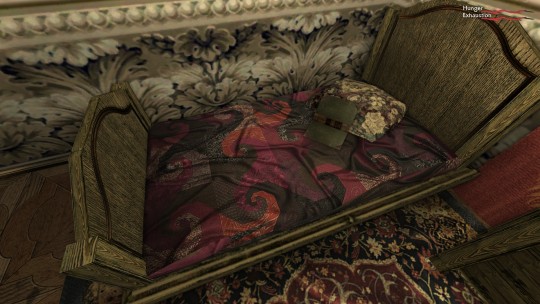
He has WINDOWS. His house is in a nice neighbourhood, and his roommate is a very attractive woman. There is actual furniture in his room. Not one hint of fungus growing on the walls or rust!
Can you imagine living there as your lair? Spending the whole game knowing you have a real house with a real bed to go back to at the end of each night? Seeing Eva's face every day before leaving to do quests?
Meanwhile, Artemy is stuck in this dumpster room of an abandoned factory. Cuddling with rats on his makeshift bed, held by nothing but a wooden panel, some boxes and a dream.

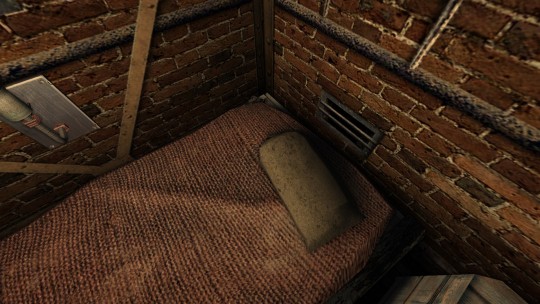
A pillow so yellow it has its own ecosystem where bugs established real estate. Is that even a pillow or is it some random rock Artemy found and chucked in there? Is it a stale loaf of bread?? Why is it hard looking?
But no, you don't even get to keep the rock roach pillow because in P2, they take it away.
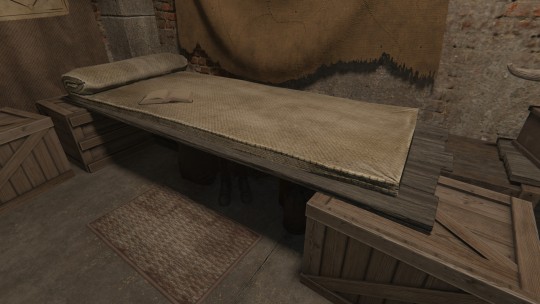
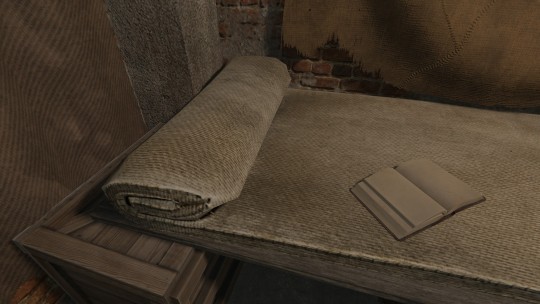
Fuck you Artemy, you had it good for too long. No pillow now because what are you gonna do about it?. Fold your mattress instead to have a resemblance of a faux sense of protection under your most vital organ during the long hours of death rehearsal that you call sleep.
Somehow, they made the bed even more unstable looking. As if that thin panel in the middle could hold Artemy's weight without caving in. Oh, and apparently, I ran out of boxes to use for furniture because the bed and the table have to share custody of the same box.
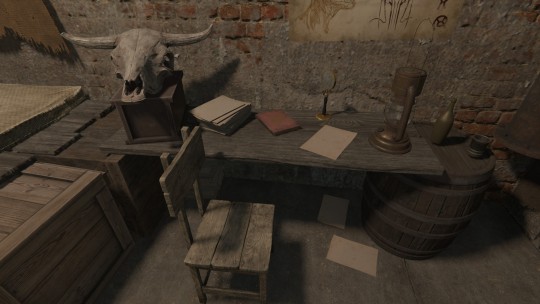
We have downgraded into barrels now, as you can see :) No, I don't know what they used to contain inside.
Waking up every day to Sticky's snotty face telling me not to spit in the wind and nagging me about cleaning up the week-old human organs thrown around that are stinking up the place.
THERE IS MOLD GROWING ON MY WALLS. RUST FLAKES FALL FROM THE EXPOSED METAL PIPES DOWN INTO MY CEREAL EACH BREAKFAST.

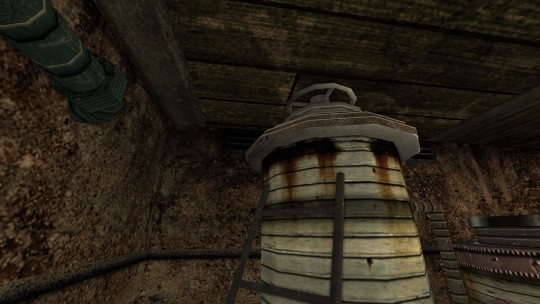
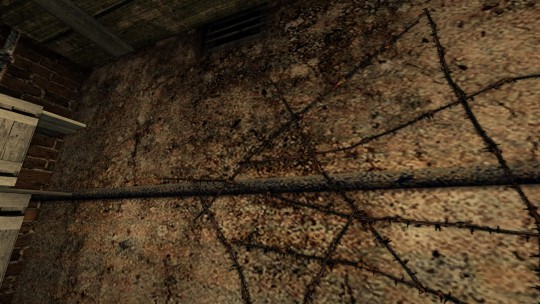
This single wall holds so much mold and fungus that they started crossbreeding and evolved into new, never seen before types of bacteria. Satan's asscrack is more hygienic than whatever biohazard plagues of Egypt this slab of concrete contains.
I live in the gutters. My only neighbours are an illegal gang of minors with a hatred for furries and another illegal gang but of adults this time who sell me bullets way above the market price. A dangerous neighbourhood where you can't have shit because SOMEONE STOLE MY BULL.

The basement I reside in has no windows, the smell is pungent and fucking vile down here. There isn't even a space for a bathroom.
This is my kitchenette/bathroomette/showerette/cupboardette/surgery tools disinfection stationette/sinkette/watercoolerette/toilette/fridge.

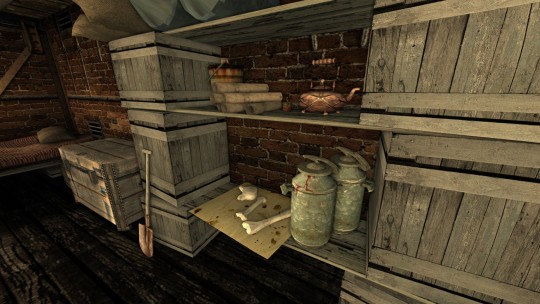
also my buckets yk.

One bucket for the makeshift bathroom, another for holding important organs and loose guts during surgery, a third one as a cooking pot for making tasty meat grub soup and the final one for murky water after sweeping the floor.
What do I use to tell them apart? Oh nothing :) I just mix em up every now and then, oppsie daisy.
Oh and the floors are CONSTANTLY wet for some reason. Yeah sticky slipped and almost broke his neck the other day so watch your steps.


There is also this eerie room with literal garbage and broken furniture right next to the entrance. Don't worry about it, sometimes I hear someone crying and screaming for help when I'm trying to go to sleep but it's just the factory being silly lol.
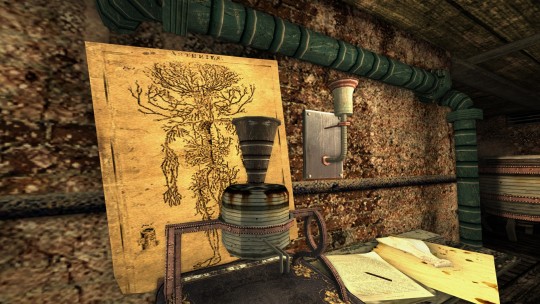
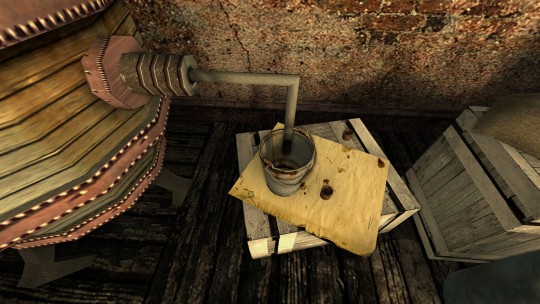
Now this? This is where the M A G I C happens. This is where Artemy the Menkhu makes his famous herbal remedies and natural mixtures. This is where the Panacea for the infamous sand plague gets made!
In a rusty empty food can.
Falling into a bucket with shit stains.
MEDICINE BABBYYY. GET YOUR WEAK SOFT BONED ASS BACK TO THE CAPITAL BITCH, THIS IS HOW REAL MEN MAKE REAALLL MEDICINE!! RAWRRRRR🦅🦅💥💥
Meanwhile, dickovsky has the view of the cathedral and polyhedron just around the corner from where he resides. He has a backyard with a lake, and all I have is a swamp behind my basement. I trudge through the mud each night, collecting weeds and herbs to mix and trade so I and the two orphans who adopted themselves into my life don't go starving.
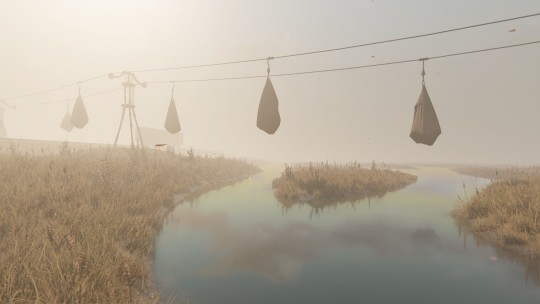

Not to mention the gaggles of herb brides loitering outside and giving me a false bad reputation.
That dandy douchbag has a pharmacy, a grocery, and a tailor right next door. The closest establishment to my shrekcore place of resident is a dingy basement bar with shady drinks and no bouncer to check for ID, I saw two kids in there once.
Pov: a qt3.14 surgeon says his dad isn't home and invites you over.
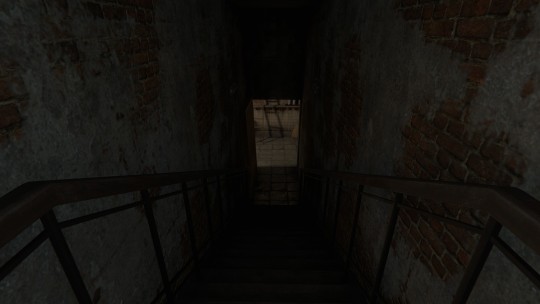
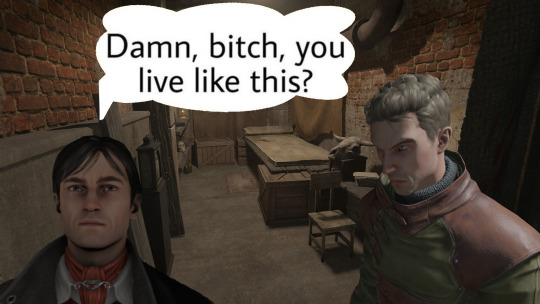
#♡otherfandoms#♡pathologic 2#♡pathologic#artemy burakh#daniil dankovsky#pathologic 2#pathologic classic hd#the haruspex#pathologic
622 notes
·
View notes
Text
Assassination Methods Through the Decades: A Writer’s Handbook

When it comes to writing about assassination, historical accuracy and understanding the evolution of methods can significantly enhance the authenticity and impact of your narrative. This guide is designed to help writers explore the diverse and often brutal methods of assassination that have been used throughout the centuries. From the poisonings of ancient times to the covert killings of medieval assassins, here’s a comprehensive guide bound to give you the perfect inspiration for your assassination scenes.
Ancient and Medieval Assassination Methods
Poisoning
Poisoning is one of the oldest methods of assassination, dating back to ancient civilizations such as Greece, Rome, and Egypt. The allure of poison lies in its ability to kill without physical confrontation, often leaving little trace of the perpetrator.
Common Poisons:
Hemlock: Famously used in the execution of Socrates, hemlock was a slow-acting poison that caused paralysis, leading to death by respiratory failure.
Arsenic: Known as the "inheritance powder," arsenic was a favorite among those seeking to kill discreetly. Its symptoms could be mistaken for natural illness, making it a popular choice in political and familial power struggles.
Belladonna: Also known as deadly nightshade, belladonna was used in both small and large doses to incapacitate or kill. The poison caused hallucinations, dilated pupils, and eventually death.
Historical Examples:
Socrates (399 BC): The Greek philosopher was sentenced to death by drinking a concoction containing hemlock, a method chosen for its relative humanity compared to other executions.
Emperor Claudius (54 AD): It is widely believed that the Roman Emperor Claudius was poisoned by his wife, Agrippina, using a dish of poisoned mushrooms to secure her son Nero's place on the throne.
Administration Methods:
Poisons were often mixed into food or drink, applied to the skin via ointments, or even introduced into the body through small, concealed needles. Assassins needed to be knowledgeable in the art of dosage to ensure a successful kill without immediate detection.
Symptoms:
Victims of poisoning would often suffer a range of symptoms depending on the poison used. These could include severe abdominal pain, vomiting, diarrhea, convulsions, and eventually, death. The slow progression of symptoms allowed the assassin time to escape, and in many cases, the cause of death was not immediately apparent, lending an air of mystery to the assassination.
Bladed Weapons
Before the advent of firearms, blades were the primary tools of assassins. Daggers, swords, and other sharp instruments were favored for their portability and effectiveness in close combat situations.
Types of Blades:
Daggers: Small, easily concealed, and lethal at close range, daggers were the weapon of choice for many assassins. The Roman pugio and the medieval stiletto were particularly popular.
Swords: Larger and more visible, swords were often used in assassinations where the element of surprise was not necessary, such as in the heat of battle or a public execution.
Kris: A wavy-edged dagger used in Southeast Asia, the kris was known for its spiritual significance as well as its lethality.
Famous Assassinations:
Julius Caesar (44 BC): Perhaps the most famous assassination in history, Caesar was stabbed 23 times by a group of Roman senators led by Brutus and Cassius. The attack was swift and brutal, demonstrating the effectiveness of a well-coordinated knife attack.
King Duncan (11th century): The assassination of King Duncan by Macbeth (as famously dramatized by Shakespeare) is an example of a stealthy, intimate kill using a blade, where the act was both personal and symbolic.
Techniques:
Assassins using bladed weapons often relied on stealth, speed, and precision. A well-placed stab to the heart, throat, or kidneys could kill instantly or within moments, leaving the assassin time to escape. In some cultures, assassins were trained in martial arts that emphasized quick, lethal strikes.
Weapon Concealment:
Blades were often concealed in clothing, boots, or even within the folds of long hair or turbans. The art of hiding a weapon until the crucial moment was key to the success of many assassinations.
Strangulation and Garroting
Strangulation was another favored method of assassination in ancient and medieval times, especially for those who sought to avoid bloodshed or noise. The garrote, a weapon used to strangle a victim, was particularly effective in this regard.
Tools Used:
Garrote: A length of wire, cord, or fabric used to strangle a victim from behind. The garrote was silent, deadly, and could be easily concealed, making it a popular choice for assassins throughout history.
Hands: In cases where no weapon was available, assassins might rely on their own hands to strangle a victim. This method required physical strength and proximity but could be effective in the right circumstances.
Historical Examples:
Sicarii (1st century AD): A group of Jewish zealots who used short daggers to stab Roman collaborators in crowded places. The Sicarii were also known for strangling their enemies with garrotes.
Medieval Europe: Strangulation was sometimes used as a method of execution for nobles, where a public beheading or hanging might be considered dishonorable.
Execution:
The assassin would typically approach the victim from behind, loop the garrote around their neck, and tighten it quickly and forcefully, cutting off the victim's air supply. Death would occur within minutes due to asphyxiation or a broken neck.
Advantages and Risks:
The main advantage of strangulation was its silence. Unlike a stabbing or poisoning, strangulation could be done without alerting others nearby. However, it required physical strength and a certain level of risk, as the victim might struggle or fight back.
Renaissance and Early Modern Era
Firearms
The Renaissance and early modern era marked a significant turning point in the history of assassination methods with the introduction of firearms. Gunpowder, first developed in China, made its way to Europe and fundamentally changed the dynamics of warfare and personal combat, including assassination.
Introduction of Gunpowder and Early Firearms in Assassinations:
The development of gunpowder-based weapons provided assassins with a new tool that could kill from a distance, reducing the risk of capture. Early firearms such as matchlock and flintlock pistols were bulky and required significant skill to use effectively, but their lethality made them a preferred choice for assassins by the 16th century.
Firearms allowed for quick, deadly strikes that were difficult to defend against, making them ideal for assassinations where the element of surprise was crucial. The loud noise and smoke, however, meant that escape required careful planning.
How Accuracy and Concealability Impacted Methods:
Early firearms were not known for their accuracy, which necessitated close-range attacks. Assassins often had to be within a few feet of their target to ensure a successful hit. As a result, these weapons were usually concealed under cloaks or in specially designed holsters that allowed for a quick draw.
Over time, improvements in gun design, such as rifling and better gunpowder, increased accuracy and allowed for slightly longer-range assassinations. Despite these advancements, concealability remained a critical factor, as firearms were often large and unwieldy compared to daggers or poison.
Key Assassinations Involving Firearms:
Assassination of King Henry IV of France (1610): King Henry IV was assassinated by François Ravaillac, a Catholic fanatic who stabbed the king while his carriage was stopped in traffic. While this was a stabbing, the period saw a rise in the use of firearms for such purposes. Henry IV's era was marked by religious turmoil, where firearms began to play a role in political assassinations.
Assassination of William the Silent (1584): William I of Orange, also known as William the Silent, was assassinated by Balthasar Gérard using a handgun. This marked one of the first successful assassinations of a prominent figure using a firearm, demonstrating the growing popularity of this method during the Renaissance.
Poison Rings and Needles
The Renaissance period also saw the refinement of more discreet methods of assassination, particularly the use of poison rings and needles. These tools allowed for covert poisoning, often in social settings where other weapons might not be feasible.
Discreet Poisoning Techniques:
Poison Rings: These rings contained a small hidden compartment that could hold a lethal dose of poison. The wearer could discreetly slip poison into a drink or onto food with a simple flick of the ring’s lid. Poison rings were popular among nobility and were often used in court intrigues where open violence would have been impossible.
Poison Needles: These were small, sharp needles often coated with a fast-acting poison. They could be hidden in clothing or other objects and used to deliver a quick, often unnoticed prick that would introduce the poison into the victim’s bloodstream. Needles were ideal for use in crowded settings, such as royal courts or banquets, where the assassin could blend into the crowd after delivering the fatal dose.
Notable Instances of Usage:
Lucrezia Borgia (1480-1519): While the extent of her involvement in poisoning is debated, Lucrezia Borgia, a member of the infamous Borgia family, is often associated with the use of poison rings to eliminate her political enemies. The Borgia family’s reputation for cunning and ruthlessness made poison one of their favored tools for securing power.
Catherine de' Medici (1519-1589): The French queen consort and mother to several kings of France, Catherine de' Medici, was rumored to have employed poison rings and needles to remove rivals and control court politics during the Wars of Religion in France.
Explosives
The early use of explosives in assassination attempts represented a shift towards more destructive and indiscriminate methods of killing, often targeting not just the primary victim but also anyone nearby. Explosives became a favored tool in situations where a dramatic statement was intended, or where traditional methods of assassination were not feasible.
The Early Use of Explosives in Assassination Attempts:
Explosives were first used in assassination attempts during the Renaissance and early modern periods, although their use was limited by the difficulty of creating and handling reliable explosive devices. Gunpowder was the primary explosive material, and it required careful handling to avoid premature detonation.
The use of explosives was often tied to larger political or religious motivations, as the collateral damage caused by an explosion could have a significant psychological impact on the population or ruling class.
The Effectiveness and Risks Involved:
Explosives were highly effective in causing mass casualties and instilling fear, but they also carried significant risks for the assassin. Improper handling could result in accidental detonation, and the use of explosives often made it difficult for the assassin to escape unnoticed.
The unpredictability of early explosives also meant that they could fail to detonate or cause less damage than intended, leaving the assassin vulnerable to capture and execution.
Historical Example:
The Gunpowder Plot (1605): One of the most famous early uses of explosives in an assassination attempt was the Gunpowder Plot, in which a group of Catholic conspirators, including Guy Fawkes, attempted to blow up the House of Lords during the State Opening of Parliament, with the aim of killing King James I and much of the Protestant aristocracy. The plot was foiled, but it demonstrated the potential of explosives as a tool for political assassination.
The Industrial Revolution and Early 20th Century
Sniper Rifles
The Industrial Revolution brought about significant advancements in weaponry, including the development of sniper rifles. These long-range firearms allowed assassins to strike from a distance, often without being seen or heard.
The Rise of Long-Range Assassinations:
Sniper rifles were designed for accuracy over long distances, enabling assassins to kill targets from hundreds of meters away. This development allowed for greater safety and discretion, as the assassin could remain hidden while observing the target through a scope.
The advent of rifling, which gave bullets a stable, spinning motion, greatly improved accuracy and range. Coupled with telescopic sights, these rifles became the preferred tool for military and political assassinations during the late 19th and early 20th centuries.
Famous Cases:
Assassination of Archduke Franz Ferdinand (1914): Although Archduke Franz Ferdinand was ultimately killed by a handgun, the era in which he was assassinated saw the rise of snipers as a significant threat. The tensions and technologies of the time set the stage for future political assassinations using sniper rifles.
Assassination of President John F. Kennedy (1963): Although beyond the early 20th century, the assassination of JFK by a sniper is a prominent example of how sniper rifles became synonymous with political killings. This event marked a turning point in the history of assassination, highlighting the lethal effectiveness of long-range firearms.
Car Bombs
The introduction and evolution of vehicular explosives, particularly car bombs, added a new dimension to assassination tactics in the 20th century. Car bombs became a favored method due to their potential for mass destruction and the ability to target individuals in transit.
Introduction and Evolution of Vehicular Explosives:
The use of car bombs began in earnest during the early 20th century, particularly in conflicts where traditional methods of assassination were either too risky or ineffective. These bombs could be planted in vehicles and detonated remotely, offering a high degree of control over the timing and impact of the explosion.
Over time, car bombs became more sophisticated, with the addition of remote triggers, time delays, and increased explosive power. They were used not only in targeted assassinations but also in acts of terrorism aimed at destabilizing governments or instilling fear in the populace.
Techniques for Planting and Detonating:
Planting a car bomb required detailed planning, as the vehicle needed to be accessed and rigged with explosives without arousing suspicion. Detonation methods varied from simple timed fuses to complex remote-controlled devices, allowing the assassin to maintain distance from the blast.
The challenge for assassins was ensuring the target was inside or near the vehicle at the moment of detonation. This often involved careful observation of the target’s routines and the use of decoys or distractions to ensure the bomb’s effectiveness.
Chemical and Biological Agents
The 20th century saw the development and use of more advanced chemical and biological agents in assassinations. These methods, often invisible and insidious, allowed for killings that were difficult to trace and could be disguised as natural causes.
Use of More Advanced Poisons and Toxins:
With advancements in chemistry and biology, assassins gained access to a range of deadly substances that could kill quickly or slowly, depending on the agent used. Toxins like ricin, cyanide, and various nerve agents became tools of state-sponsored assassinations, particularly during the Cold War.
Chemical agents could be introduced through food, drink, or even via contact with the skin or inhalation, making them versatile and deadly. Biological agents, on the other hand, could cause diseases that mimicked natural illnesses, allowing assassins to kill without immediate suspicion.
Historical Examples:
Ricin: Ricin, a highly potent toxin derived from castor beans, was famously used in the assassination of Bulgarian dissident Georgi Markov in 1978. Markov was attacked with a modified umbrella that injected a tiny pellet containing ricin into his leg, leading to his death a few days later.
Cyanide: Cyanide has been used in various assassinations due to its rapid action and high lethality. One of the most notorious uses of cyanide was in the mass suicide-murder in Jonestown in 1978, where members of the Peoples Temple ingested cyanide-laced punch, although this was not an assassination in the traditional sense, it demonstrated the deadly effectiveness of the poison.
These innovations in assassination methods during the Industrial Revolution and early 20th century reflected the growing complexity of warfare and espionage, as well as the increasing role of technology in shaping the tactics of assassins.
Modern and Contemporary Assassination Methods
Silenced Firearms
In the modern era, the evolution of silenced firearms, or firearms equipped with suppressors, has played a significant role in covert assassinations. The suppressor, commonly known as a silencer, reduces the noise and muzzle flash of a firearm, allowing assassins to operate with a higher degree of stealth.
The Evolution of Suppressors and Their Use in Covert Assassinations:
Suppressors were first developed in the early 20th century and have since become a staple in the arsenal of assassins. Initially, suppressors were bulky and limited to specific firearms, but advancements in technology have made them more compact, effective, and adaptable to a wide range of weapons.
Silenced firearms are ideal for close-quarters assassinations where discretion is paramount. The reduced noise levels prevent immediate detection, giving the assassin time to escape or even carry out multiple hits without alerting nearby individuals.
High-Profile Cases:
Cold War Assassinations: During the Cold War, silenced firearms were frequently used by intelligence agencies on both sides of the Iron Curtain. The KGB, CIA, and MI6, among others, employed suppressors in various covert operations to eliminate targets without drawing attention.
Georgi Markov (1978): Although Markov’s assassination in London involved a poison-tipped umbrella, the use of suppressors was prevalent in the same period for similar covert operations. This era exemplified the silent, precise methods preferred by state-sponsored assassins.
Remote-Controlled Devices
The rise of remote-controlled devices, including drones and other modern technologies, has introduced a new dimension to assassination methods. These devices allow assassins to strike from a distance, often from thousands of miles away, with precision and minimal risk.
Drones and Other Modern Technologies in Assassination:
Drones, equipped with cameras and weapons, have revolutionized modern warfare and assassination. These unmanned aerial vehicles can be operated remotely, providing real-time surveillance and the ability to deliver lethal force with pinpoint accuracy. Drones are particularly effective in targeting individuals in difficult-to-reach or heavily guarded locations.
Other remote-controlled devices, such as bombs or cars rigged to detonate via remote, offer similar advantages. These methods allow the assassin to maintain a safe distance from the target, reducing the likelihood of capture or identification.
Notable Instances in Recent History:
Qasem Soleimani (2020): One of the most high-profile drone assassinations in recent history was the killing of Iranian General Qasem Soleimani by a U.S. drone strike in Baghdad. This event highlighted the capabilities of drone technology in executing precise, targeted killings with global political implications.
The Killing of Anwar al-Awlaki (2011): The American-born cleric and al-Qaeda leader was targeted and killed by a drone strike in Yemen, marking a significant moment in the use of remote-controlled devices in the War on Terror.
Cyber-Assassination
As technology continues to advance, the concept of cyber-assassination has emerged as a new frontier in covert operations. This method involves using cyber means to assassinate individuals, such as hacking into medical devices or other critical systems.
The Concept of Assassination Through Cyber Means:
Cyber-assassination leverages the vulnerabilities in modern technology, particularly medical devices like pacemakers or insulin pumps, which can be hacked to deliver a fatal outcome. This method represents a shift from physical to digital assassination, where the target can be killed without the assassin ever being in the same country, let alone the same room.
Cyber-attacks can also target critical infrastructure, leading to deaths through indirect means such as causing traffic accidents by hacking self-driving cars or disrupting life support systems in hospitals.
Ethical and Legal Implications:
The rise of cyber-assassination raises significant ethical and legal questions. Unlike traditional assassination methods, which can be physically traced, cyber-attacks are often difficult to attribute, making accountability a major issue. This anonymity can lead to increased use of such methods by state and non-state actors alike.
Legal frameworks have yet to fully catch up with the technological realities of cyber-assassination. As a result, there is a grey area regarding the legality of such actions, particularly in the context of international law and the rules of engagement in warfare.
Assassination Methods by Region
Europe
Throughout history, Europe has seen a variety of assassination methods, each influenced by the region’s diverse cultures, political climates, and technological advancements.
Specific Methods Popular in Different European Countries Across Various Eras:
In medieval Europe, poison was a favored method, particularly among the Italian nobility. The use of poisoned food, drink, and even clothing was common in the courts of Italy, where political intrigue and betrayal were rife.
During the French Revolution, the guillotine became the symbol of state-sanctioned assassination, used to eliminate political enemies swiftly and publicly. The Reign of Terror saw the use of this method to instill fear and maintain control.
In more recent history, Eastern Europe, under Soviet influence, saw the use of more covert methods, such as radioactive poisoning, exemplified by the assassination of Alexander Litvinenko in 2006 in London.
Asia
Asia's vast and diverse history has given rise to a wide range of assassination techniques, each influenced by the unique cultural, political, and historical contexts of its various regions.
South Asia (India, Pakistan, and Surrounding Areas):
In ancient and medieval India, assassination was often a tool used in dynastic struggles. One notable method was the use of Vishkanya—young women supposedly trained from childhood to tolerate and deliver poison. These women were allegedly used to assassinate powerful enemies by poisoning them through intimate contact.
During the Mughal Empire, political intrigue often involved the use of poisoning and covert killings to eliminate rivals. The struggle for succession in royal courts frequently led to the use of assassination as a means to secure power.
East Asia (China, Korea, Japan):
Ninja Tactics (Japan): In feudal Japan, ninjas were often employed as assassins due to their skills in stealth, espionage, and the use of a variety of weapons. Techniques such as silent killing with swords, blow darts, and the use of shuriken (throwing stars) were common. Ninjas were masters of disguise and could infiltrate enemy strongholds to eliminate targets without detection.
While ninja tactics are widely known, East Asia’s history of assassination is much broader. In ancient China, assassins were sometimes employed by rival states or within the imperial court to eliminate threats. Famous historical accounts like the attempted assassination of Qin Shi Huang, the first Emperor of China, highlight the role of assassins in shaping the region’s history.
Korea’s history also includes instances of political assassinations, particularly during the Joseon Dynasty, where court intrigue and power struggles often resulted in the discreet elimination of rivals.
East Asia (China, Korea, Japan):
Poison Darts: In regions like Borneo and the Philippines, blowguns with poison-tipped darts were used by indigenous tribes to silently kill enemies. These weapons were effective for their stealth and the ability to deliver deadly toxins without the need for close combat.
Central Asia:
In Central Asia, particularly during the time of the Silk Road, assassins were sometimes employed by powerful khans and warlords to secure trade routes and eliminate threats. Assassination was a strategic tool in maintaining control over vast and often unruly territories.
Middle East
The Middle East has a rich and complex history where assassination has played a role in political and dynastic power struggles, often tied to the region’s diverse empires and cultural traditions.
Historical Assassinations Involving Political Power Struggles:
The Middle East, home to some of the world’s oldest civilizations, has seen assassinations employed as a tool of political maneuvering for millennia. In ancient Mesopotamia, assassinations were sometimes used to secure thrones and eliminate rivals within royal families.
During the time of the Ottoman Empire, the practice of fratricide—where newly crowned sultans would eliminate their brothers to prevent future challenges to their rule—was a brutal form of state-sanctioned assassination.
The Byzantine Empire, centered in what is now modern-day Turkey, also witnessed political assassinations as a common method for securing power, with emperors and high-ranking officials often falling victim to their rivals.
The Americas
The Americas, particularly the United States and Latin America, have experienced a range of political assassinations, often with far-reaching consequences.
Political Assassinations in the U.S. and Latin America:
In the United States, the assassinations of presidents like Abraham Lincoln, John F. Kennedy, and civil rights leaders such as Martin Luther King Jr. have left indelible marks on the nation’s history. These high-profile killings were often carried out by lone gunmen or small conspiracies and had profound impacts on the country’s political landscape.
Latin America has seen numerous political assassinations, often linked to dictatorial regimes, revolutionary movements, and drug cartels. Figures like Che Guevara and Salvador Allende were assassinated or killed under controversial circumstances, reflecting the volatile political environments in many Latin American countries during the 20th century.
This overview of assassination methods by region highlights the diverse and evolving tactics used across different parts of the world, shaped by the cultural, political, and technological contexts of each region.
Common Misconceptions About Assassination
The Myth of the Clean Kill
In fiction, assassinations are often depicted as clean and precise, with the target silently slumping over after a single blow or shot. However, in reality, even well-planned assassinations can go awry. Bodies don’t always react predictably to trauma, and factors like adrenaline, the environment, and unexpected movements can complicate even the most meticulously planned kill. A supposedly lethal blow may not immediately incapacitate the target, leading to prolonged struggles, noise, and potential witnesses.
Silencers and Stealth
In movies and TV shows, silencers (or suppressors) are often shown completely muffling the sound of a gunshot, reducing it to a mere whisper. In reality, while suppressors do reduce the noise, they don’t make it silent. The sound of a suppressed gunshot can still be quite loud, akin to a clap or the popping of a balloon, and depending on the environment, it may still attract attention. Additionally, the sound of the bullet impact and mechanical noise from the firearm are not silenced, further dispelling the myth of a completely stealthy kill.
Poison Timing
Popular media often portrays poisons as acting instantaneously, with victims collapsing mere seconds after ingestion or injection. In truth, the effects of poisons vary widely depending on the substance, dose, and the victim’s physiology. Some poisons, like cyanide, can act within minutes, but others might take hours or even days to fully incapacitate or kill. Symptoms might develop gradually, and in some cases, the victim might not even realize they’ve been poisoned until it’s too late. This misconception can lead to unrealistic portrayals of poisoning in fiction.
Resources
Books
Recommended Reading for Research on Assassination Techniques:
"Assassination Generation" by Lt. Col. Dave Grossman – This book explores the psychology of killing and its portrayal in the media, providing insight into both real-life and fictional assassinations.
"Hitmen: The True Stories of Assassins, Contract Killers, and Political Hired Guns" by Nigel Cawthorne – A collection of real-life accounts detailing the methods and motives of professional assassins throughout history.
"The Art of Political Murder: Who Killed the Bishop?" by Francisco Goldman – A detailed investigation into the assassination of Bishop Juan Gerardi in Guatemala, offering a deep dive into the intersection of politics and murder.
Documentaries
Visual Resources That Depict Historical Assassinations:
"Killing Oswald" – A documentary that explores the conspiracy theories surrounding the assassination of President John F. Kennedy, delving into the methods and motives behind one of the most famous assassinations in history.
"The Men Who Killed Kennedy" – A controversial documentary series that investigates various theories about the assassination of JFK, offering insights into different assassination methods and their implications.
"Assassins: The Story of Medieval Hitmen" – This documentary provides an in-depth look at the history of assassins in the medieval period, focusing on their training, methods, and the political impact of their actions.
Looking For More Writing Tips And Tricks?
Are you an author looking for writing tips and tricks to better your manuscript? Or do you want to learn about how to get a literary agent, get published and properly market your book? Consider checking out the rest of Quillology with Haya Sameer; a blog dedicated to writing and publishing tips for authors! While you’re at it, don’t forget to head over to my TikTok and Instagram profiles @hayatheauthor to learn more about my WIP and writing journey!
#hayatheauthor#haya's book blog#haya blogs#writing community#quillology with haya#writing tools#writer things#writing advice#writer community#writing techniques#writing prompt#writing stuff#creative writing#ya writing advice#writing tips and tricks#writer tools#writers of tumblr#writer blog#writers block#quillology with haya sameer#writers on tumblr#writerscommunity#writer stuff#author help#author advice#author#writing inspiration#writeblr#author things
355 notes
·
View notes
Note
you said in your post about egypt that you wished people would pay more attention to other spots- would you mind telling us about those spots? like, in your opinion, what are the most beautiful things in egypt?
!!! IM SO GLAD YOU ASKED
usually people like to visit the pyramids, the library of alexandria and alexandrian beaches and some temples in upper egypt which yk understandable they're incredible, but there's so much more to see!!
in the heart of cairo there's so many beautiful historic religious places to visit. coptic cairo is stunning, i recommend anyone visiting egypt to go visit a coptic church if they can the architecture will blow you awayyy my parents took me to visit one when i was really young and to this day it's one of my favorite memories of egypt. and the mosques too! we have some of the oldest mosques in africa they're definitely worth a visit.




the siwa oasis!! i haven't been there myself and i'm literally never not salty about it😭 every time we try to plan a trip there something comes up </3


on the north coast, alex is by far the most visited city (for good reason) but in terms of beaches and resorts i prefer marsa matrouh it's less crowded, and the water is so clear it's insane


on the red sea sharm el sheikh is a mustttt visit destination, i went snorkeling there for the first time and got see the pretty coral reefs it's one of my favorite places everrrr in egypt <33

taba is also another place in sinai that looks freaking unreal but i haven't been there yet
i haven't been to upper egypt unfortunately but aside from visiting the famous temples in luxor and aswan i really want to see nubian architecture in person, it's so colorful and full of life

#*upper egypt is actually southern egypt btw the naming is ancient egyptian#inbox#there's so many places i didn't even mention like wadi el hitan and port said and al arish ugh
399 notes
·
View notes
Text
Human-sized doll in the old ages?
(This is another Version of my original post that was inspire by Jason's doll, unlike Damian's. This one's for our Tim!)
My Original post for Damian's
-------------------------------------
The Drakes were in another trip to England as a new business trip concerning a new museum had taken place a Auction to very Old items lost in time, and for the Drake's it was an opportunity to find something new and all...but the only one who stands out the most was the Human-sized doll.
For a hundred years old Doll it was gorgeous, they hesitantly carried it out, after they bought it..it cost them a fortune but it was worth it.
The dress maybe been Billion's of dollars or even pounds due to its quality and design..if people sell it of course- but no stains, no rips of anything, as if it was just newly made..the only thing standing out the most was beautiful emerald gem necklace lace with unique designs of a Dragon flames. flickering a green flame
It was gorgeous, the designs of the eyes. Green emerald that you might think it glowed ( Well we never know)
The height of the doll was that of a child no older than the height of there Son, Timothy when he was 8..
Now that they think of it..there son was interested in photography lately, maybe this doll might be in good use for modeling..
Yeah they should send this as a early birthday present
(Jesus Christ you couple just realized that?)
-----------------------------------------------
According to the auction staff that had taken care of the doll for about fifty years,
It was actually the old man's family had been maintaining the doll passed over for about hundreds years ago,
This Doll was a Original, it wasn't a Replica or sorts to the real thing, This was The Real fortune, This Doll was said to be a request of a powerful and influencal Aristocrat house, said Unknown but Famous Duke held position of this Doll, As his Perfect Daughter
Talk about the creeps Janet Drake Got
-----------
Which why the Doll was said to be haunted by the Soul of the Young child that the Duke was heard obsessive wanted to be his perfect daughter,
Similar Cases said by guards hearing soft taps of heels or ruffled sounds of a gown being moved or even giggles, whispers, or even a full on conversation with a voice of a young child ,Three unlucky Guards onces have check and investigate it out, before being passed out and muttering glowing green eyes and freezing so hard that they may have been in alaska.
Well being the Drake couple they are just completely ignore the Staff caretaker and send it to there only son, Timothy
Its surprised they haven't been killed yet after they had just left that curse mummy int there Goddamn house when visiting ancient Egypt-
---------------------------------------------
Timothy wasn't dumb, he was very minded in what his “parents” gave to him in his Early gifts, it wasn't a trinket, or another Mummified corpse that was stuck in the basement or equipment his mother wanted him to use for activities...
It was a doll, by the looks of it.
It was a girl's doll, in a glass case, it was looking at him, with a smile..you could see a teeth- was it supposed to be teeth? So white...it reminded him of that fairytale book..Snow white
With a beautiful Gown, but the most was the necklace, huh..so this was a gift, after he had found the note containing some birthday pleasantries and blessings and pity writing..from his parents.
This gift was considerately chose by his parents...he thought to his mind that this would be just another batch of a trinket being left in the basement
Boy...was he totally wrong
----------------------------------
Dick wasn't a man to complained, he was decent atleast in his own perspective, yes the whole family is definitely something but he wouldn't trade this for the world, except for that is to question Tim's....Ehem stuff, the whole doll..was definitely creepy, after the ordeal, yes Jason is back, but not in good terms, and the whole fam known that Tim was hiding something from them, and how it turns out, this is why privacy exist, now he can't stop looking at that child doll...and the visible thumps of those heels.
--------------------------------
Damian was questioning his choices, maybe he need to properly and carefully using his words now, after convincing and maybe caught Drake red handed, he known Drake was different but not that different for having a doll with the same height as him and look so realistic, if ever he doesn't want to bother asking or taunting Drake (for now) and may he be excuse, he needs to go to the barn to check with animals there ( he somehow still got that charm)
#dcxdp#dc x dp prompt#dpxdc#danny phantom#tim drake-wayne#justice league#dc x dp#batman#danny fenton#jason todd#batfam
163 notes
·
View notes
Text
actually i'm going to talk about the met's weird thing with the rust belt more because it was definitely one of those things where a few years ago when the new met lucia was in development i was like, oh cool i wonder what they'll do with that, but now that we're here... man does it leave a bad taste in the mouth.
here's a question for you: Why Do So Many Operas Take Place In Seville?



seville is the setting for some hundreds of operas, including many of the famous ones: the barber of seville, carmen, la forza del destino, the marriage of figaro, fidelio, don giovanni (which actually might not take place in seville but given don juan stories up to them did it sticks)... the list keeps going. and there was a legitimate reason for this- for hundreds of years, seville was seen as a seedy and sexualized location where anything could happen. that exoticism carries over into the plot of many of the Seville Operas, which often feature seductions, crimes, and passion stories that fit neatly into the tales of the seedy city.
opera is about, in a lot of ways, EXOTICIZING OTHER PLACES. the spectacle of a setting was often a major part of the excitement of seeing a new opera, especially in the 19th century. but some of these places 'work' better than others, for a variety of reasons that boil down to the politics of representation and who is being who onstage.
seville works as an Exotic Opera Location Du Jour for multiple reasons.
for one thing, if you notice, a lot of the seville operas take place 60-100+ years before the composition of the opera. for example, the marriage of figaro and don giovanni were composed in 1786 and 1787 respectively, and both depict 1600s seville. if you were writing a Seville Opera right now, for comparison, it would probably take place between 1890 and 1960- there's enough of a time gap that exploring the world as a more fantastical setting is easier to swallow.
for another, seville is in western europe, and many of the composers depicting it were also from western europe. there is an evened playing field. (THERE IS A NOTABLE EXCEPTION about this that I WILL GET TO SOON.)
finally, now that these operas are over a century old, we're even more removed from their concept of 'seville' and the 'seville' in operas has been turned into something of a convenient fantasy location in which to put an opera. it's something out of a medieval times dinner and tournament and not necessarily meant to be Actual Real Seville at all, which works fine because Seville Operas work without needing much context about the location. don jose is a soldier, you don't need to know what seville soldiers' duties were. figaro is a barber, you don't need to know what barbers in seville were like. and so on.

but there are other opera locations that don't serve this purpose as well- often nonwhite regions appropriated by white composers. the incredibly warped conceptions of egypt that show up in aida and the magic flute, the looking-glass japan of madama butterfly, the brief moment in which la fanciulla del west wherein the opera remembers the existence of native american peoples... suddenly the make-believe of exoticism goes away and is replaced by a sour feeling because in many cases these cultures could not have a say on their own depictions in the operatic world, while the western europeans featured in the operas that exoticize locations like seville or paris could.

carmen is an interesting case study in Opera Exoticism because it features a location that is fine enough to exoticize (early 1800s seville) and a titular character that is not. carmen was- and, in many productions, is still- written as romani. she embodies many negative stereotypes about the culture- she is seductive, morally ambiguous, a smuggler, a femme fatale. yet we as an audience are made to sympathize with her. she is honest about who she is, accepting of the hard truths that are given to her; she is close to her friends and her crueler moments come across as more of an ill-planned joke than a real sense of antipathy. carmen is both a product of how romani people were written by white men in her time, and progressive in that we root for her against the (white) don jose. (and it should be noted that she knows that if he kills her he will be executed for it- carmen is about a mutual kill.) a good carmen production will evaluate all of these features and include them into the work somehow; be it through metatextual commentary, or careful representation, or understanding of what the audience is seeing.
anyway, now that we've covered all that, let's go look at The Met Opera's Current Fascination With Lower Class American Communities and see what we find there.

the rust belt and the sun belt have captured the imagination of the met opera recently, as seen in their current productions of lucia di lammermoor and carmen. these settings are depicted as grimy, miserable, and joyless; women are thrown around by men, men are depicted as one-dimensional monsters that are not to be understood or seen into. the cruelty is the point- these productions do not treat lower-class americans as people to relate to or understand. the sole exceptions are lucia- who is made out to be something of an outsider, so the audience can relate to her- and carmen, who is misinterpreted into being a sad woman who just wants love (god forbid a woman have some other motivation). the racial issues that dominate the cultural conversation in america are unspoken of in these productions, even when there is an opportunity to; this becomes especially uncomfortable in carmen, where the above history of carmen as a nonwhite woman and the opera's setting on the US-Mexico border (with the soldiers cast as border agents!) goes unmentioned in the name of 'heightening the class and gender inequality'- both of which were already in the original work along with the race inequality!
these productions are both directed by non-american white people. simon stone is from australia, carrie cracknell is from britain. why would they want to depict this setting? because they see it as a dark, cynical den of seediness and repressed sexuality- a world where we don't have to worry about empathy, or broader implications, because the people in these settings do not go to the met- a world where we can look on with revulsion and unease.... this crosses the line from exoticism into fetishization, in which lower class people become pawns for the met to use as set dressing.

this is especially uncomfortable because of opera's long history being seen as a 'rich people hobby'. opera is characterized as snobbish, useless, reprehensible; an art form that exists only to please the rich and the white and the male-dominated. all of which is not true! i believe to the bottom of my heart that everybody deserves a night at the opera, and that there is an opera for everyone, and everybody should feel welcome in the opera house (or other opera space du jour). and there are so many people working to change the industry from the inside, particularly the work of artists of color to broaden the opera canon and depictions of that canon as we know them. but as long as the met continues to use poor people as set dressing instead of bothering to communicate with them in a meaningful way, as long as the met sees these settings as places where brutes live instead of human beings, that stereotype of the rich man's hobby is going to continue. and the met is going to suffer for it- as i suspect that, as time goes on, the voyeuristic lens of these operas into the lives of abused lower-class women will be seen as more and more revolting.
TLDR

151 notes
·
View notes
Text
Writing Reference: Alchemy
Some scholars say alchemy comes from the Greek cheo, meaning “I pour” or “I cast,” since much of alchemy has to do with the working of metals.
But many believe the word comes from the Egyptian Khem, meaning “the black land” (land with black earth), and see that as indicating Egypt as alchemy’s place of origin:
The Arabic article al was added to Khem to give alchemy.
Alchemy is an ancient art, at the heart of which lies the manufacture of a mysterious substance called the Philosopher’s Stone.
Later, as the science (some call it a pseudoscience) progressed, the article was again dropped, to become chemistry.
Alchemy certainly is the early history of chemistry.

The Philosopher's Stone - the highly desirable and legendary object that is said to transform base metals—such as lead—into gold.
However, the gold in this instance symbolizes not just the valuable metal, but enlightenment and eternal life, and Alchemists are concerned with their own spiritual and personal development as well as the pursuit of the seemingly unattainable goal.

The Chinese differentiate these different kinds of alchemy as nei-tan (the alchemy of spiritual transformation) and waitan (the straightforward “lead-into-gold” type).
The motto of the Alchemists is Solve et Coagula, meaning “Solution and Coagulation.”
The work of the early Alchemists was necessarily a secretive and clandestine matter, and its secrets are still held within a rich encrustation of symbols, pictures, oblique references, double meanings, and riddles.
Alchemical symbolism features animals, birds, colors, and parables as well as archetypal symbols such as the Cosmic Egg.
The key tenets of alchemy are encompassed in something called the Smaragdina Tablet, or the Emerald Tablet.

The tablet is said to have been found by Alexander the Great in the tomb of Hermes Trismegistus (Hermes the Thrice Great) who is the founder of all things alchemical.
The Alchemical Tradition exists/existed in Ancient Egypt, China, and India, but its most recent incarnation was in medieval Europe.
Those who dabbled in alchemy include the famous and the infamous, such as John Dee (astrologer to Queen Elizabeth I), Paracelsus, Albertus Magnus, Christian Rosenkreuz, Nicholas Flamel, and Isaac Newton.
Some of the chemical treatises are befuddling to even the most learned of scholars, but the very word “alchemy” is almost in itself a symbol, conjuring up images that are magical, mystical, and marvelous.

Sources: 1 2 3 4
#writing reference#alchemy#symbols#writeblr#langblr#linguistics#literature#fantasy#writers on tumblr#writing prompt#poetry#poets on tumblr#spilled ink#dark academia#light academia#lit#writing inspiration#writing inspo#writing ideas#creative writing#writing resources
106 notes
·
View notes
Photo

The Forty-Two Judges
The Forty-Two Judges were divine entities associated with the afterlife in ancient Egypt and, specifically, the judgment of the soul in the Hall of Truth. The soul would recite the Negative Confession in their presence as well as other gods and hope to be allowed to continue on to the paradise of the Field of Reeds.
The ancient Egyptians have long been defined as a death-obsessed culture owing to their association with tombs and mummies as depicted in popular media and, of course, the famous discovery of the Tomb of Tutankhamun by Howard Carter in 1922 CE. Images of the jackal-headed god of the dead Anubis or the black-and-green mummified form of Osiris have also encouraged this association in the public imagination.
Actually, however, the Egyptians loved life and their seeming preoccupation with death and the afterlife was simply an expression of this. There is no evidence that the ancient Egyptians longed for death or looked forward to dying in any way – in fact, precisely the opposite is abundantly clear – and their elaborate funerary rituals and grand tombs stocked with grave goods were not a celebration of death but a vital aspect of the continuation of life on another, eternal, plane of existence. To reach this idealized world, however, one needed to have lived a virtuous life approved of by Osiris, the judge of the dead, and the Forty-Two Judges who presided with him over the Hall of Truth in the afterlife.
The Afterlife
The Egyptians believed that their land was the best in the world, created by the gods and given to them as a gift to enjoy. They were so deeply attached to their homes, family, and community that soldiers in the army were guaranteed their bodies would be returned from campaigns because they felt that, if they died in a foreign land, they would have a harder time – or possibly no chance at all – of attaining immortality in the afterlife.
This afterlife, known as The Field of Reeds (or Aaru in ancient Egyptian), was a perfect reflection of one's life on earth. Scholar Rosalie David describes the land which awaited the Egyptians after death:
The underworld kingdom of Osiris was believed to be a place of lush vegetation, with eternal springtime, unfailing harvests, and no pain or suffering. Sometimes called the `Field of Reeds', it was envisaged as a `mirror image' of the cultivated area in Egypt where rich and poor alike were provided with plots of land on which they were expected to grow crops. The location of this kingdom was fixed either below the western horizon or on a group of islands in the west. (160)
To reach this land, the recently deceased needed to be buried properly with all attendant rites according to their social standing. Funerary rites had to be strictly observed in order to preserve the body which, it was thought, the soul would need in order to receive sustenance in the next life.
Once the body was prepared and properly entombed, the soul's journey began through the afterlife. Funerary texts inside the tomb would let the soul know who they were, what had happened, and what to do next. The earliest of these were the Pyramid Texts (c. 2400-2300 BCE) which then evolved into the Coffin Texts (c. 2134-2040 BCE) and were fully developed as The Egyptian Book of the Dead (c. 1550-1070 BCE) during the period of the New Kingdom (c.1570-c.1069 BCE). The god Anubis would greet the newly departed soul in the tomb and usher it to the Hall of Truth where it would be judged by Osiris and an important aspect of this judgment was conference with the entities known as the Forty-Two Judges.
Continue reading...
103 notes
·
View notes
Note
oh fuck you’re right that trope is unparalleled. do you have any fics that fit that “it isn’t like this with other people” feeling? for drarry 🥺
I know!!! Such a delicious Drarry trope 🤌🏼 I got a couple recs but am sure there are more out there and I need all of them!
The Things They Never Say by @bixgirl1 (E, 9k)
Harry and Draco don't know how to talk. So they do other things instead.
Five Weddings and a Potions Accident by lauren3210 (E, 19k)
In which Harry thinks he’s a playboy, everyone else knows better, and Hermione will kill Seamus if Ron tries to collect on that bet.
Famous by @fw00shy (E, 24k)
It's a couple of years after the war, and Harry's bored of models now, the same way he's bored of Ron's constant nagging, bored of his Weasley monogram knitwear, bored of the same fucking grin that greets him when he hands his fire-truck red Bugatti over to the valet every night. He wants to find—well, he isn't sure what he wants. Anything but models. Harry is in the mood for...messy. And Draco Malfoy's looking like a walking disaster in the making.
I Bet That You Look Good on the Dancefloor by birdsofshore (E, 28k)
Harry felt lit up from inside as soon as he entered the bar. There were blokes dancing together, their bodies close to one another, not keeping a wary distance as Harry was always careful to do when he was near another man. God, he wanted this – wanted it so much he could taste it, a metallic tang of heat and desire. He suspected nothing would ever be the same again – especially when he saw who else was in the room.
Embers by @shiftylinguini (E, 41k)
Werewolf Alphas aren't meant to be alone, or to suppress their ruts indefinitely like Draco has been since he was bitten eight years ago. He needs company, companionship, to knot ― he needs an Omega Heat Companion. At least, that’s what the Healers say, and even Draco can admit contacting the person they’ve referred him to might be nice. Of course it turns out to be bloody Potter.
In The Red by bixgirl1 (E, 45k)
When Harry goes looking for a vampire at a Creature club, the second-to-last thing Harry expects is to find Malfoy working there. The last thing he expects is to fall in love with him.
Harry Potter Gives a Shit by talithan (E, 58k)
“Where are you headed?” “No place special,” Draco fumbled, and flushed further. But then: “I can change that,” said Harry Potter.
We Are Young (I'll Carry You Home Tonight) by Femme (E, 70k)
Harry and Draco have been falling into bed on and off again since the last election five years ago, much to the amusement--and financial gain--of their circle of friends. But when Harry agrees to work with Draco to put Kingsley Shacklebolt into the Minister's office, they can't work side-by-side again every day and sleep together; that would be courting disaster. Wouldn't it?
Grounds for Divorce by Tepre (E, 122k)
Malfoy finds a coin. Harry finds a letter. A story about histories, a story about families. A story about a lemon tree somewhere in Upper Egypt.
A Secondary Education by Thunderbird587 (E, 234k)
Fleeing the aftermath of his recent divorce, Draco Malfoy takes up a post as the new Potions Master at Hogwarts. At first he believes his hopes for a fresh start are dashed when he sees that a certain boyhood rival is on staff there as well. But Harry Potter is being weirdly nice to him, leaving Draco no choice but to play along.
137 notes
·
View notes
Text
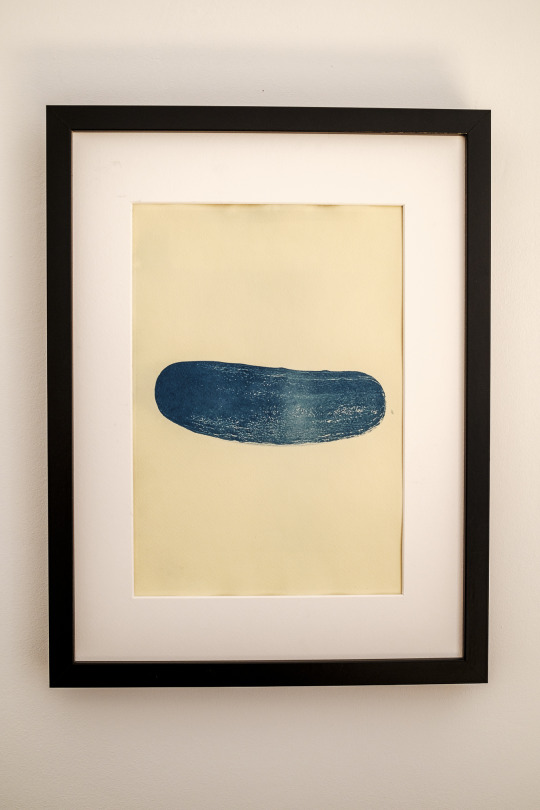



I wanted to celebrate with these two prints that I made, a long history that jewish people, garlic and pickles have.
You can purchase these print via my Etsy shop.
And here's the history:
Already in ancient times, garlic was a central part of celebrating Shabbat. The Talmud devotes several passages to talking about garlic, explaining that it is a key part of Shabbat meals. “With what does one delight in the day of Shabbat?” the Talmud asks, recording an answer provided by Rav Yehuda, son of Rav Shmuel bar Sheilat, who recalled the words of his teacher Rav: “With a dish of beetroot, and a large fish, and heads of garlic” (TalmudShabbat 11b). Elsewhere, the Talmud refers to Jews who celebrate Shabbat as “garlic eaters,” so closely identified was Shabbat dinner and lunch with this fragrant vegetable. (Talmud Nedarim 31a)
Even later on, in the medieval times, the conncetion between jews and garlic was quite close. In fact, it helped the community to survive! In Istanbul, when Jews avoided the plague during a terrible epidemic, it was said that the virus did not penetrate the Jewish area because of the smell of garlic. Jews hung bulbs of garlic outside their doors to ward off the plague as a talisman and sign of good luck. The food historian Gil Marks adds: “Historically, the addition of garlic was among the typical Jewish touches that enhanced local dishes. In many cultures, the presence of garlic marked a dish as Jewish.”
In Germany, in the towns of Speyer, Worms and Mainz were home to large, vibrant Jewish communities. A popular acronym for these areas took the first letter from each town – S, W (which is written with a double “U” sound in Hebrew) and M – echoed the Hebrew word for garlic, shoom. The area was known as Kehillas Shoom (or SchUM) – the community of “Shum”, or garlic in Hebrew.
So identified were German Jews with garlic that some anti-Semitic images persist from the Middle Ages and Renaissance, depicting Jews holding or posing with bulbs of garlic.

But jews and pickles go back for a long time too.
Eastern European Jews brought their pickle-making traditions to America in the late 19th and early 20th centuries and made it famous there. Pickled cucumbers were an important part of their diet due to the need for preserving food in harsh climates in Eastern Europe, where was a common practice to collect and preserve pickles in order to survive winter. Everything could be pickled, from lemons to carrots, with varying degrees of culinary success.
Some took the cucumber, a cheap, accessible vegetable, preserved it in the spring to make them last through the winter and feasted on it throughout the year. Some of those people were Jews and thus the Jewish love affair with pickling began, as a way of keeping vegetables hygienic and healthy.
Fermantation itself as has a biblical orgin in various places. Perhaps the best-known early reference to fermented food is the Passover story in Exodus (12:39): When the Jews were "thrust out of Egypt, and could not tarry," their dough could not rise (through fermentation). We know this unleavened bread as matzo. But when they left Egypt, after some time, their longing for these goods came up: "We remember the fish which we were wont to eat in Egypt for nought; the cucumbers, and the melons, and the leeks, and the onions, and the garlic” It’s likely that the cucumbers mentioned by our Jewish forebears were pickled in some way. Ancient cucumbers tasted extremely bitter and the ancient Egyptians “cooked” their cucumbers by lightly fermenting them. The resulting pickled vegetables were slightly alcoholic, and were seemingly eaten for their mind-altering properties.
#jewish#jumblr#print#pickle#garlic#organic#food#fermentation#pickling#tradition#eastern europe#delicacy#deli#garlics#onions#cucumber#pickles#cyanotype#judaism#jewish history#food history#etsy#sale#art#cyanotype print#sunprint#original#decoration
64 notes
·
View notes
Text
soft release
summary: steven got a little rough with this one
pairing: steven grant x male reader
word count: 1.5k
warnings: 18+ warning, s3x, top!steven, rough stuff, nods to comic steven, maybe ooc idk
a/n: based on this request.
masterlist | more moon knight

His silence was deafening, all you could hear was the sound of the car speeding through the streets of London. His hands gripping the steering wheel so tight his knuckles turned white. Your hands were cold and clammy.
You were on the way home from a gala with your partner, famous museum curator, Steven Grant of the National Art Gallery. The gala featured new historical findings from a site in Egypt funded by the Grant Foundation.
There were at least fifty people in the museum. Everyone was clad in pristine clothing, gowns, and expensive suits drinking equally expensive champagne. You came as Steven’s partner, a surprise to a lot of his colleagues. He wore a dark pinstripe tuxedo with the brightest white tie, his shoes were polished so bright it shone under the moonlight.
He made you wear a similarly luxurious midnight blue tuxedo that complemented his. He introduced you to the other curators in Europe. You tried not to get bored but it definitely was. Steven said he hated it himself. You anxiously downed a few glasses of champagne, which you eventually regretted.
He was still silent when you arrived at the manor, removing his coat and his tie. He looked at you with his sunken eyes, a glare you would only see from Marc but you knew it was still Steven. He licked his lips and let out a sigh.
“If this is about earlier—” you tried to say, but Steven pulled you into your shared bedroom, your back against the hardwood door.
“Flirting with my co-workers, ‘Do you think that was nice of you, love?” he said, his face so close to yours you could feel his warm breath on your lips. His hand is above your shoulder.
You shook your head, speechless. “Don’t think so,” he pulled back and went onto the bed removing his silver cufflinks. “Come here,” he gestured to the bed, his voice deep and serious, like a general giving away orders.
“I’m so sorry—” you uttered. He let out a few tsks before pulling his belt off. On the usual, it would be you who would be the more aggressive when it comes to stuff like this. You went to sit on the edge of your white king-sized bed, Steven looking down on you with shadows in his eyes.
He caressed your cheek with his thumb, it was so warm against your skin. His thumb went to your lips as he bent down to kiss you. You let out a soft moan as his lips left yours. He smirked. “Can we play?” he asked. You nodded before he placed his tie around your eyes, it was soft against your nose bridge and your temples.
Steven started to undress you, your shirt, your pants, your underwear. Before he laid you down he took the tie around your neck and wrapped it around your wrists and secured it with a knot. He gently placed you against the wide bedspread, your arms above your head.
“I hated the way he looked at you, the way he touched your hand as he talked to you,” he whispered in your ear leaving wet kisses around your neck. You could feel the stubble prick your skin. “Is it fair, my love? To let me see all that?” he said. You shook your head before he spun you around so your face faced the sheets, your ass cold against the air.
He smacked your rear with a loud clap, like a thunderstrike. A red print is left on your skin. He massaged it with a grip that grew tighter and tighter. You let out a cry from impact, tears forming in your eyes. Steven knew how much this might have shocked you, how it wasn’t really like him. But he saw the way that man looked at you, filled with so much lust and want, he wanted to hurt him. “Shit, I’m so sorry love was that too much?” he shakingly said.
“No, it—it’s good I liked it,” you witnessed a new side to him, your sweet and soft-spoken boyfriend was now all rough with you. You felt your center turn and harden. Steven’s own hardness grew, the visual of you prone on the bed bound and blindfolded, he cursed. It was Marc’s idea. He heard him whisper it in the car. Do it, teach ‘em a lesson.
“You’re so naughty, what will I do without you, love?” he said as he undressed his trousers. He bent down to kiss your nape, you could feel his tip rub against your back, leaving a wet trail. He took some lube and prepared your hole, his big digits inserted in you opening you up. He left kisses against your ass, leaving a few bites. You wince from the slight pain.
You hear a foil wrapper being opened and an elastic being stretched. “Can I be rough with you?” he said, you let out a whiny yes. He gently pressed into you, his hardness entering you. The two of you let out a loud groan, his hands gripping your waist.
He proceeded to thrust into you with fervor, he let out loud needy noises. You could feel his fingers press into your hip bones, his skin slapping into yours through each thrust. You could feel the hard tip ram into your most sensitive spots. You cried out curses and his name. The bed started to creek and rock back and forth, your fingers dug into the soft sheets.
The sheer amount of force he was letting out was enough to push you to the edge, you could feel your cock leak so much pleasure. Stop, he’s close, a voice whispered to Steven. He pulled out, you let out a sob from the loss of sensation.
“Steven—babe,” you were a whimpering mess.
“Not yet pretty, ‘need to show you how mad I am right now,” he sulked before turning you over and placing hips between your legs. He started to press wet kisses around your torso, his tongue playing with one of your nipples. The lack of vision made your whole body feel much more sensitive.
Your bound hands tried to touch his hair as he kissed you down to your leaking cock, he swiftly took your wrist and pinned them back above your head. He went to kiss around your neck, his hand going to your cock, he stroked it so fast, and with the precum, it was so slippering you were sure you’d finally cum. He stopped when your legs began to close, you let out another cry.
“You’re leaking so much, love. No one can make you like this but us.”
“I know—”
“Just the three of us for you. Is that not enough?”
“You’re m—more than enough.”
“So it won’t happen again?” he sounded like he was begging, pleading for you to only care for him.
“Yes—”
The moment you gave out your answer he pressed his cock again to your hole and began to fuck you again. He was harder, it was stiff around your rear, but pleasurable sliding across your muscles. His hip bones clashed against your skin, wet sounds filled the room. Your eyes rolled back from the sensation, your legs trembling.
The constant rubbing loosened the tie from your eyes, you saw Steven covered in sweat, glistening under the moonlight. His curly hair was all tousled and the veins in his hands were visible as it held your waist. He looked at you and noticed that you could finally see him. He placed a wanton kiss on your lips, it was lousy at best but filled with so much want. You placed your hands around his head and pulled him close.
He untied you and your hands began to snake across his wide back. The feeling of his cock inside you was starting to make your head feel light, your eyes half-lidded and your toes curled. You were a moaning mess under him.
He whispered that he was close. His thrusts became erratic but still hard. You asked if you could ride him and he obliged. You began to ride him as he sat on the edge of the bed. Your hips moved up and down, his hands clenched on your ass. The two of you shared one last kiss as he came inside you, your own cum shooting on your torsos. You felt the room darken as your eyes closed.
You woke up to the room still dark, the moon shone on the window. You felt a cold wet towel on your rear. It was Steven, cleaning you up as he pressed soft kisses on the redness around your waist.
“You’re awake,” he said, placing the wet towel on the basin near the bed stand. “‘Sorry if it was too much.”
“Marc got you into this?” you giggled. He nodded like a scolded puppy. You stroke his wet hair before you place a light kiss on his lips. “Cuddle me into bed then, my body is sore,” you said as he took out your softest blankets and covered your naked bodies. He peppered you with kisses before you went back into slumber.
interactions are greatly appreciated btw if u liked this fic and want more send me a prompt and i'd gladly make something from it :>
#moon knight x reader#steven grant x reader#marc spector x reader#jake lockley x reader#moon knight x male reader#steven grant x male reader#marc spector x male reader#jake lockley x male reader#moon knight smut#steven grant smut#marc spector smut#jake lockley smut
605 notes
·
View notes
Text

Diverse African Cultures and Beliefs about Life After Death
Introduction
Africa is a continent rich in cultural diversity and traditions, and this extends to its beliefs about life after death. Across the vast expanse of Africa, there are numerous cultures, each with its own unique perspective on what happens when life on Earth comes to an end. In this article, we will explore some of the fascinating beliefs about life after death that are deeply ingrained in African societies.
1. The Ancestor Veneration of the Akan People (Ghana and Ivory Coast)
In Akan culture, which encompasses the Ashanti, Fante, and Akuapem people, ancestors hold a significant place in the spiritual realm. They believe that after death, the souls of the departed continue to exist and influence the lives of their living descendants. Ancestor veneration involves rituals, offerings, and prayers to keep these spirits content and receive guidance and protection from them.
2. The Reincarnation Belief of the Yoruba People (Nigeria, Benin, and Togo)
The Yoruba people have a belief in reincarnation, where it is thought that the soul of a deceased person is reborn into a new body. The deceased's name may even be given to the newborn as a way of connecting the past and present lives. The Yoruba also believe that the deceased can communicate with the living in dreams and visions.
3. The Eternal Journey in Ancient Egyptian Culture (Egypt)
Ancient Egypt is renowned for its elaborate beliefs about the afterlife. Egyptians believed in a complex journey after death, where the soul faced trials and judgment before reaching the eternal paradise known as the "Field of Reeds." To ensure a successful afterlife, elaborate burial rituals and tombs were constructed, including the famous pyramids.
4. The Importance of Ancestral Connection in Zulu Beliefs (South Africa)
Among the Zulu people, the connection to ancestors is deeply cherished. It is believed that after death, the ancestors continue to play a role in the lives of their descendants. Rituals such as sacrifices and ceremonies are performed to honor and seek guidance from these ancestral spirits. Displeasing the ancestors can bring misfortune, while pleasing them can bring blessings.
5. The Dualistic Beliefs of the Dogon People (Mali)
The Dogon people have a dualistic belief system. They believe that after death, one's soul splits into two parts: one part goes to the ancestral realm, while the other is reincarnated into a new being. This complex system reflects the Dogon's spiritual connection to both their ancestors and the cycle of life.
6. The Spiritual Transition in the Akan-Bono Culture (Ghana)
The Akan-Bono people have a unique belief in the transitional phase after death. It is believed that after a person dies, their soul goes through a period of adjustment before joining the ancestors in the spiritual realm. During this time, the soul is thought to revisit important places and people from their earthly life.:
7. The Burial Rituals of the Senufo People (Ivory Coast, Mali, and Burkina Faso)
Among the Senufo people, the transition from life to the afterlife is marked by elaborate burial rituals. They believe that after death, the deceased's spirit lingers in the vicinity of their burial site. Special ceremonies and sacrifices are conducted to ensure a peaceful journey for the departed and to maintain a connection between the living and the deceased.
8. The Concept of the "Underworld" in San/Bushmen Beliefs (Southern Africa)
The San people, also known as Bushmen, have a belief in an underworld inhabited by spirits. After death, the souls of the departed are thought to travel to this underworld, which is considered a realm of ancestral spirits. The San people often use trance dance rituals to communicate with these spirits and seek guidance.
9. The Immortality Belief of the Himba People (Namibia)
The Himba people hold a belief that the spirits of their ancestors are immortal and continue to watch over the living. They also believe in reincarnation, where the spirit of a deceased person can be reborn into a new child within the same family. This belief reinforces the strong bond between generations.
10. The Role of Dreams in Khoikhoi Beliefs (South Africa)
The Khoikhoi people place great importance on dreams as a means of communication with the deceased. It is believed that dreams can provide insights, warnings, or messages from the spirit world. Special rituals are performed to interpret dreams and receive guidance from ancestors.
11. The Journey to the "Land of the Dead" in Dinka Culture (South Sudan)
Among the Dinka people, the journey to the afterlife is seen as a migration to the "Land of the Dead." They believe that the deceased will join their ancestors in this realm, where they can continue their pastoral lifestyle. Special rites and ceremonies are conducted to facilitate this transition.
12. The Symbolism of the Baobab Tree in Many African Beliefs
Across various African cultures, the mighty baobab tree is often associated with the afterlife. It is believed that these ancient trees serve as a link between the earthly realm and the world of spirits. Many cultures bury their deceased near baobab trees, believing that the tree's roots connect with the spirits below.
Conclusion
The intricate beliefs about life after death in Africa reflect the continent's cultural richness and diversity. From ancestor veneration to reincarnation, from underworld journeys to dream communication, these beliefs offer a glimpse into the deep spiritual connections that African societies maintain with their departed loved ones. Each culture's unique perspective contributes to the fascinating mosaic of African spirituality and traditions.
#life#animals#culture#aesthetic#black history#history#blm blacklivesmatter#anime and manga#architecture#black community
199 notes
·
View notes